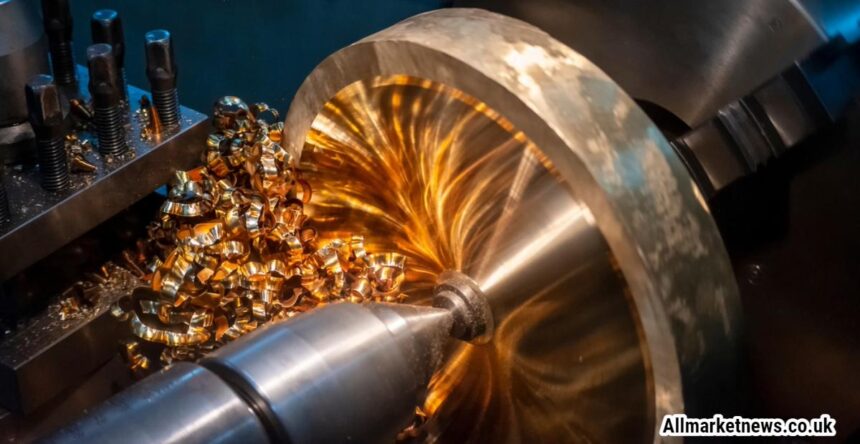|
Getting your Trinity Audio player ready... |
Brass, a timeless and versatile alloy, has maintained its significance across various industries for centuries. Created by mixing copper with zinc, brass combines the best properties of both metals—strength, malleability, and corrosion resistance—making it a material of choice in many applications. From the ancient Romans, who first discovered brass, to modern-day manufacturers, this alloy has proven its value in a range of sectors. Whether it’s using brass sheet, brass bar or brass rods, industries, craftspeople and artists all over the world still use brass in ways traditional and innovative. In this blog, we will delve into the diverse applications of brass metal and examine the current market trends that suggest its growing demand.
Common Applications of Brass
Architecture and Construction
Brass is a popular material in architecture and construction due to its durability and aesthetic appeal. Its golden hue adds a luxurious touch to buildings, making it a favoured choice for cladding, roofing, and decorative elements such as statues and plaques. Brass’s resistance to corrosion also ensures longevity, making it ideal for both indoor and outdoor applications.
Automotive Industry
The automotive industry relies heavily on brass for its corrosion resistance and low friction properties. Brass components are found in engine parts, such as valves, pumps, and carburettors, where heat resistance is crucial. Additionally, brass is used for exterior trims due to its ability to be easily moulded into various shapes, contributing to the vehicle’s aesthetic and functional performance.
Electrical Equipment
Brass’s excellent electrical conductivity makes it indispensable in the production of electrical components. Switches, connectors, plugs, and terminals made from brass ensure efficient electricity flow, reducing the risk of overheating and power loss. Its durability and reliability make brass a trusted material in the electrical industry.
Musical Instruments
Brass is synonymous with musical instruments, particularly those in the brass family, such as trumpets, trombones, and saxophones. The alloy’s acoustic properties produce rich, resonant tones that are essential to these instruments. Additionally, cymbals made from brass alloys offer distinct sound qualities, further showcasing the material’s versatility.
Jewellery and Decorative Items
Brass has been used in jewellery making since ancient times, valued for its lustrous appearance, similar to gold, at a fraction of the cost. Its malleability allows artisans to create intricate designs for earrings, bracelets, and pendants. Brass is also popular in DIY projects, where its versatility enables hobbyists to craft unique home décor items like trays and candle holders.
Marine Industry
In the marine industry, brass’s resistance to saltwater corrosion makes it an ideal material for shipbuilding. Components such as propellers, fittings, and valves are often made from brass, ensuring longevity and reliability in harsh maritime environments.
Market Trends and Future Prospects

The global market for brass is experiencing steady growth, driven by its widespread applications and the increasing demand for copper, one of its primary components. Currently valued between £3000 and £4000 per ton, brass remains a valuable commodity in the metals market.
Several factors contribute to the rising demand for brass. Firstly, the industrial manufacturing sector continues to rely on brass for its durability and versatility. Consumer electronics, which utilize copper and brass in circuitry and microchips, are another significant source of demand. With technological advancements, the need for these materials shows no signs of slowing down.
Moreover, the growing focus on sustainability has further boosted the popularity of brass. As an alloy that can be recycled, brass aligns with the global shift towards environmentally friendly practices. Manufacturers are increasingly choosing brass not only for its performance but also for its recyclability, contributing to a circular economy.
Looking ahead, market analysts predict that the demand for brass will continue to rise through 2030. This growth is likely to be fuelled by its ongoing use in established industries, as well as its potential in emerging markets. As sustainability becomes a more prominent consideration, the recyclability and enduring value of brass will only enhance its appeal in the years to come.
You Might Also Like:
6 Tips To Avoid thejavasea.me leaks aio-tlp
7 Common Errors on 127.0.0.1:62893 Explained With Fixation
Everything You Need to Know About cs Servicecentervip
The Impact of Hamro Solar LLC on the Solar Industry
What Are the Benefits of Using Sifangds?
Conclusion
Brass metal, with its rich history and diverse applications, continues to be a vital material in various industries. Its unique properties—such as durability, corrosion resistance, and aesthetic appeal—make it a preferred choice for everything from architecture to electronics. As market trends indicate a growing demand for brass, this ageless alloy is poised to remain a cornerstone of industrial and creative applications for years to come. Whether in the form of musical instruments, automotive components, or cutting-edge electronics, brass’s versatility ensures its relevance in an ever-evolving market.
